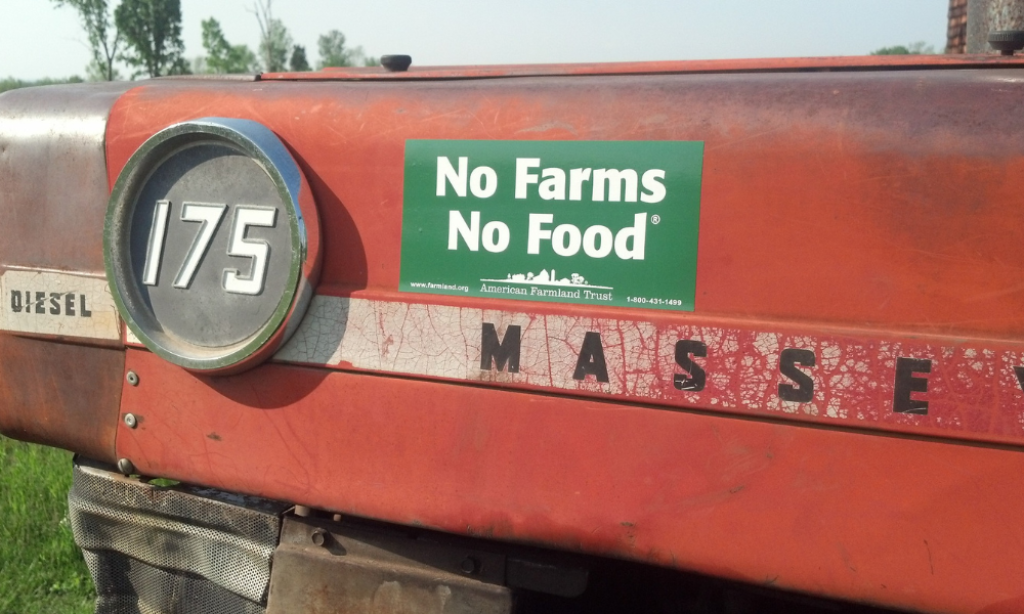Solbakken Farm
Preserving Family Legacy in Waupaca County, Wisconsin
Snapshot: After more than a century in the family, Art and Rheta Richardson have permanently protected 288.5 acres of Solbakken Farm through a conservation easement with American Farmland Trust. The semi-retired couple runs a grass-fed beef operation, direct marketing their rotationally-grazed cattle to local customers and a grass-fed cooperative. Their farm joins several other neighboring conservation easements that permanently protect the landscape, which is over 1,700 acres of conserved farmland and forest within just four miles. Now they've made sure their farming legacy will continue for generations to come.
Solbakken Farm at a Glance
Acres Protected: 288.5 acres
Year Completed: 2025
Conservation Partners: NRCS (ACEP-ALE program), Waupaca County, and Tillamook Creamery (Farmland Forever Fund).
Primary Benefits:
Agricultural preservation: Protects high-quality farmland in a state-designated agricultural enterprise area.
Generational farming: Keeps the property in the Richardson family, who have farmed it since 1920.
Conservation leadership: The Richardson’s model regenerative practices, including rotational grazing and carbon sequestration.
Environmental protection: Protects agricultural resources while also safeguarding wildlife habitat, federally threatened species, and water quality through strategic fencing and nutrient management.
Land Use: The property contains agricultural land, ponds, wetland, and woodland.
Community Impact:
Easements help to stabilize the land base for agriculture and work to maintain the rural and agricultural character of Waupaca County.
Waupaca County is committed to protecting its critical agricultural and natural lands. The easement contributes to a growing block of protected land in the area, including farms that border Solbakken Farm.
The easement demonstrates how AFT can help farmers work with NRCS and the state of Wisconsin and Waupaca County to protect land and purchase easements.
AFT is also supporting Waupaca County’s overall farmland protection efforts by co-holding the easement and using our experience with navigating NRCS’ funding process.
Their Story
Rheta's grandparents first purchased 80 acres in 1920 in a secluded valley in Northwestern Wisconsin between Green Bay and Stevens Point. Historically, the land was used to grow wheat and potatoes, but they had bigger plans to transition the farm into a dairy. They moved an old wheat barn up to the top of a hill, built a stone basement underneath it, and started milking 14 dairy cows. They even built stalls for work horses.
By the 1930s, when Rheta's parents took over, the farm started growing. They added another 160 acres, and the operation kept expanding until 1982 when it reached its current size. Today, Solbakken Farm sits at about 335 acres, with 230 acres of pasture and 38 acres of woodlands. Fun fact: Six of the ponds on their land were constructed in 1965 with the help of the Wisconsin Department of Natural Resources to promote wildlife habitat.
These days, the Richardsons rotate about 150 head of cows, calves, yearlings, and 2-year-olds on the pasture. All their tillable land is in permanent pasture, with grasses and legumes inter-seeded as needed. It’s all grass-fed, all the time.
The rotational grazing system wasn’t always the plan. In 2011, Art was on the verge of giving up farming altogether, until he connected with an NRCS planner who introduced him to managed grazing techniques. Through NRCS training programs and technical assistance, Art learned how rotational grazing could transform both his land and his livelihood
They helped him design and fence 62 acres to start, and the results reignited Art’s commitment to stewarding the land. He watched his animals' quality of life improve dramatically and the health of his land begin to regenerate. This inspired him to gradually expand the grazing system and share his experience with other farmers in the community.
Art has been an advocate for farmland protection for years.
As a Town Board member, he pushed through a farmland preservation zoning ordinance and separately worked to have the town designated as an agricultural enterprise area, underscoring the importance of future agricultural use.
But he didn’t stop there. Art was also actively involved in the county's efforts to participate in the state's inaugural Purchase of Agricultural Conservation Easement (PACE) program and has helped seven farms in the county apply for and receive PACE funding, including his next-door neighbor.
In 2022, Art and Rheta decided it was time to protect their own farm. The speedbump? Wisconsin didn't have money for agricultural easements at the time, and the county lacked experience with federal conservation programs. That's when Art reached out to American Farmland Trust.
“We felt developers were interested in our property for residential housing due to its proximity to urban areas. This is good farmland that our family has stewarded for many years, they took good care of it. We feel that it is our privilege and responsibility to continue to be good stewards of this land, just as our parents and grandparents did before us,” explain Art and Rheta.
AFT stepped in to fill the critical gap, guiding the Richardsons through the complex federal ACEP-ALE (Agricultural Conservation Easement Program - Agricultural Land Easements). AFT not only helped secure the federal funding, but also served as a knowledgeable intermediary, holding the easement initially while building the county's capacity to manage conservation easements long-term. This partnership model allows AFT to transfer the easement to local entities once they're equipped to steward it, ensuring sustainable local farmland protection.
“With the property protected with a conservation easement, we no longer have to worry about the land being taken out of agricultural production and the wildlife habitat being lost,” share Art and Rheta. “We can continue to focus our energy on implementing management practices to improve the quality of the soil, water, and wildlife habitat.”
The Bigger Picture
Protecting Solbakken Farm adds another 288.5 acres to an already impressive conservation effort in the area. Within four miles of the Richardson farm, there are now 1,700 acres of protected land (320 acres of forest, 195 acres of mixed forest and agricultural land, and 1,266 acres of agricultural land).
This project is an excellent demonstration of how AFT works in partnership with farmers, local farmland protection advocates, and USDA-NRCS to protect land and support producers. The easement not only protects a critical farm in Waupaca County, but it also conserves valuable wildlife and water resources as well which benefit the entire community
Ready to protect your land with a conservation easement? Learn more about American Farmland Trust's land protection programs at https://farmland.org/land-protection-projects






